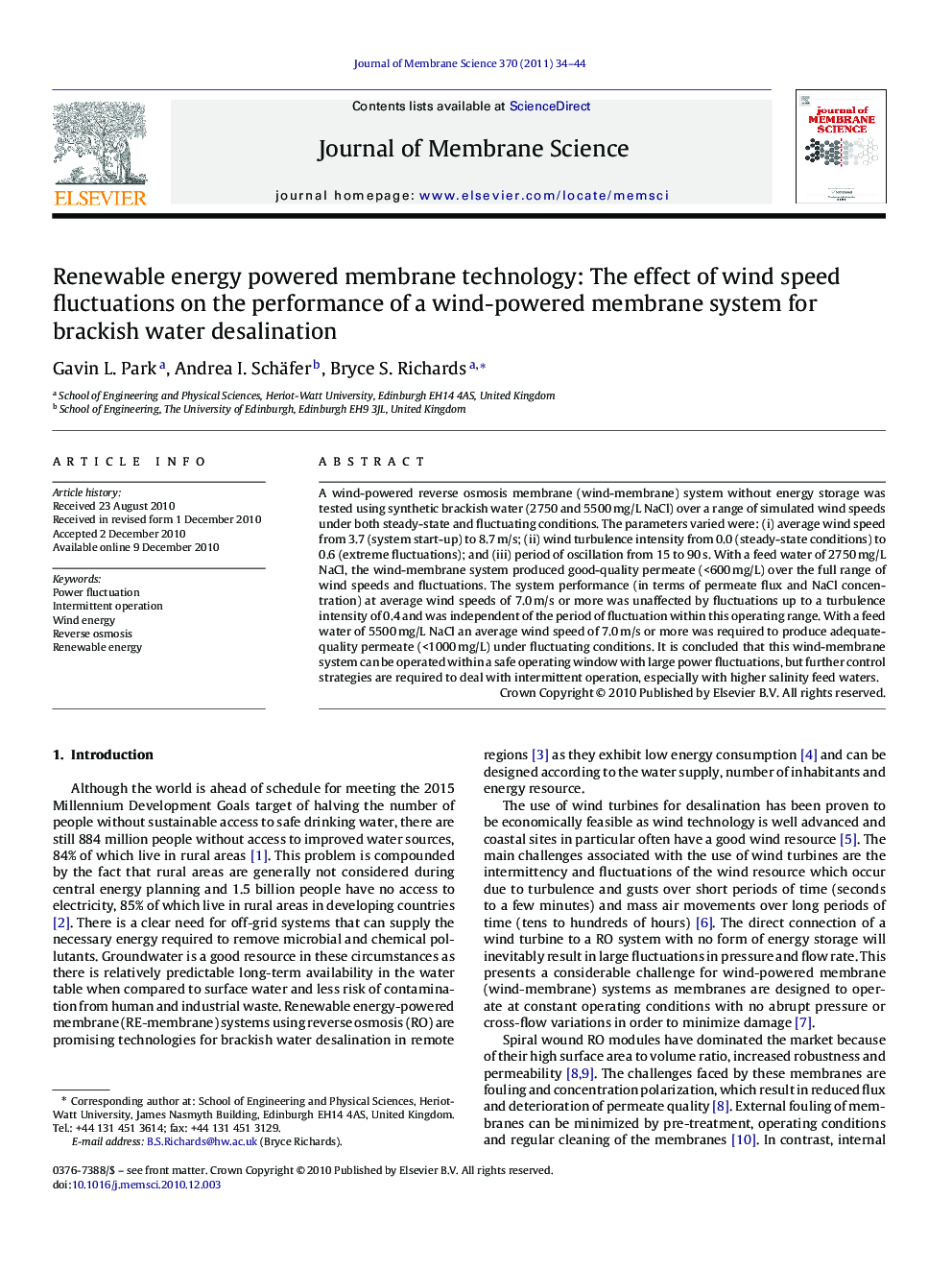| کد مقاله | کد نشریه | سال انتشار | مقاله انگلیسی | نسخه تمام متن |
|---|---|---|---|---|
| 635783 | 1456109 | 2011 | 11 صفحه PDF | دانلود رایگان |

A wind-powered reverse osmosis membrane (wind-membrane) system without energy storage was tested using synthetic brackish water (2750 and 5500 mg/L NaCl) over a range of simulated wind speeds under both steady-state and fluctuating conditions. The parameters varied were: (i) average wind speed from 3.7 (system start-up) to 8.7 m/s; (ii) wind turbulence intensity from 0.0 (steady-state conditions) to 0.6 (extreme fluctuations); and (iii) period of oscillation from 15 to 90 s. With a feed water of 2750 mg/L NaCl, the wind-membrane system produced good-quality permeate (<600 mg/L) over the full range of wind speeds and fluctuations. The system performance (in terms of permeate flux and NaCl concentration) at average wind speeds of 7.0 m/s or more was unaffected by fluctuations up to a turbulence intensity of 0.4 and was independent of the period of fluctuation within this operating range. With a feed water of 5500 mg/L NaCl an average wind speed of 7.0 m/s or more was required to produce adequate-quality permeate (<1000 mg/L) under fluctuating conditions. It is concluded that this wind-membrane system can be operated within a safe operating window with large power fluctuations, but further control strategies are required to deal with intermittent operation, especially with higher salinity feed waters.
Figure optionsDownload high-quality image (131 K)Download as PowerPoint slideResearch highlights▶ Permeate <600 mg/L produced under fluctuations in winds >3.7 m/s from 2750 mg/L NaCl. ▶ Winds of >7.0 m/s required to produce permeate <1000 mg/L from 5500 mg/L NaCl feed. ▶ Negligible impact by winds >7.0 m/s and turbulence intensity <0.4 using 2750 mg/L. ▶ Main challenge from intermittent winds which cause reduced flux and permeate quality. ▶ Power available to re-start the system important to reduce stabilization time.
Journal: Journal of Membrane Science - Volume 370, Issues 1–2, 15 March 2011, Pages 34–44